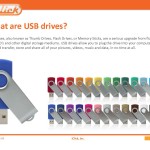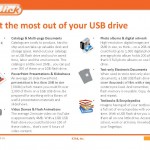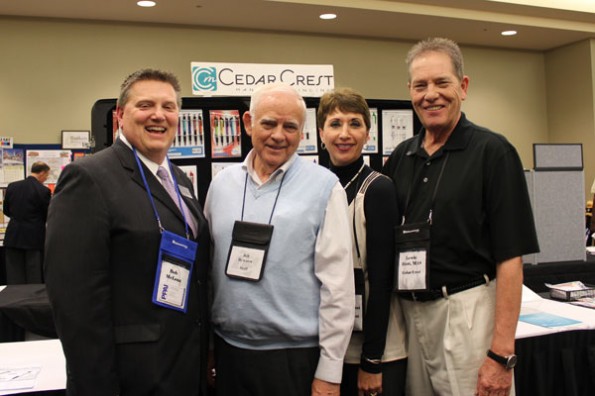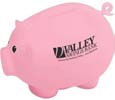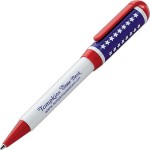This article is being reproduced with permission from the author, Rick Brenner, CEO of Prime Line.
Ever since the early years of our industry there aren’t many promotional products distributors who would describe themselves as manufacturers. But under the Consumer Product Safety Improvement Act (CPSIA), the majority of promotional products distributors –at least those who buy blank apparel from a wholesaler and then send it out to have it decorated—are just that, manufacturers in the eyes of the law. Now for the first time, as a follow-up to questions posed at PPAI’s Product Safety Summit this past August in New Orleans, the General Counsel of the U.S. Consumer Products Safety Commission (CPSC) has put in writing exactly how the senior staff at the Commission regards the responsibilities of distributors who decorate. This written guidance doesn’t change anything from the Commission’s perspective but it might surprise many distributors to learn of the extent of their responsibilities under the law.
The issue we’re discussing is related to children’s apparel – tee shirts, baseball uniforms or sweat shirts, among others – and the amount of lead that might become part of these garments through the inks or other surface coating materials that are used in the decoration process. Current law limits this lead content to no more than 90 parts per million (ppm) for any “articles intended for use by children.”
So how does a distributor become a manufacturer when they don’t manufacture the garment? According to discussions with the Commission, the original manufacturer of the garment is responsible for compliance of the garment as they sell it, whether blank or decorated. If it is a children’s product – often obvious with apparel because of children’s sizes – the garment manufacturer must comply with all the provisions of CPSIA for lead in the substrate of the product (100 ppm) and lead in any paint or surface coating (90 ppm). This manufacturer must include a permanent tracking label on the garment as well.
But according to a 2009 meeting between PPAI and CPSC, the Commission has made clear that if a promotional products distributor buys a blank and compliant garment and then performs an operation that transforms the garment in any way before the garment is sold to the end buyer, then that distributor is responsible as a manufacturer for whatever “transforming” operation it may have performed itself or contracted to have done – such as tie-dyeing, stain proofing, embroidering, adding a press-on applique or simply silk screening the garment. The distributor’s “manufacturer” responsibilities include obtaining a test from a CPSC approved third party laboratory confirming the lead content of the surface coating and applying a permanent tracking label to the garment to cover the decoration. This tracking label is in addition to any tracking label that may have been applied by the blank garment manufacturer such as Gildan, Hanes or Champion.
Some promotional products distributors have wondered why they should be held responsible for ink applied by their decorator. We posed this question to Ms. Falvey who explained that the responsible party depends on how the transaction is structured between the distributor and the decorator. If a decorator buys a blank garment from an apparel wholesaler, decorates it and then sells the final decorated product to a distributor, then the decorator is responsible as the manufacturer. But if a distributor buys a blank garment from an apparel wholesaler and then sends it to a decorator to be personalized, the distributor is the manufacturer. The decorator in the latter case is simply a subcontractor to the distributor.
So what is the new guidance that Ms. Falvey has written to help distributor “manufacturers” understand their obligations under CPSIA? It has to do with third party testing and the extent of the distributors’ responsibility to verify that their decorator is using compliant ink. A question was posed to Ms. Falvey as to whether or not a distributor could rely on a decorator’s certification that their inks were compliant without having to personally test the inks or the finished garments, as long as the decorator indicated that the inks were tested once per year.
Ms. Falvey writes: “The short answer to that question is yes. The certificate from the imprinter (or firm applying the ink) can cover multiple batches or lots of production. The only caveat is that the firm selling the imprinted item (distributor) must have exercised an appropriate level of due care to ensure that the ink being used by the imprinter is the same that is covered in the certificate such that each additional batch or lot of production will continue to comply with all applicable children’s product safety rules.”
For promotional products distributors, the CPSC guidance is a bit of a good news/bad news scenario. The good news is that distributors can rely on a decorator’s certification without having to test every garment order at a third party lab. The bad news is that the Commission has set a very high bar of responsibility for the distributor to independently verify that the inks that the decorator is using for every order are the same as what is covered by the certificate and that each additional batch is compliant as well. Each distributor will have to determine how to fulfill these responsibilities but it is clear that the distributor will have to go far beyond keeping a current certificate on file. If a recall or non-compliant garment issue arises, Ms. Falvey’s letter makes clear that the distributor will need to prove to the Commission that it exercised “an appropriate level of due care.”
From a common sense perspective, a distributor could and should visit their decorators periodically, learn about their ink procurement and testing procedures, review their third-party test documentation and do whatever they would normally do if they had their own factory or decorating operation to ensure that the operation is compliant. If a distributor does not want to do this, or doesn’t have the expertise, he or she should discuss with their legal counsel whether or not it is worth the risk to continue to be responsible for decorating children’s apparel. There is already one case in the past few months of a John Deere tee shirt recall in Canada for high lead in the decoration. Recalls are very expensive not to speak of other costs and penalties possible under CPSIA. In addition, ink is only one of the materials that may need to be tested. If the decoration involves an applique, the glue and other material in the applique must also be third party tested as it all constitutes a surface coating.
Another strategy is for distributors to continue to sell children’s apparel but to purchase it as a finished product from a compliant apparel decorator. Distributors would still want to exercise due diligence that the decorator is compliant – just as they would in purchasing children’s products from any supplier – but they wouldn’t have the manufacturer’s responsibility under CPSIA for testing and tracking labels.
Finally, as with all regulatory matters, in addition to the practical and common sense aspects, the matters discussed in Ms. Falvey’s letter are legal issues and I am not a lawyer. Nothing that I have written in this or any other article should be construed as legal advice. All industry participants – suppliers and distributors – would be well served by consulting with a product safety attorney who regularly practices before the Consumer Product Safety Commission and is an expert in CPSIA matters.
